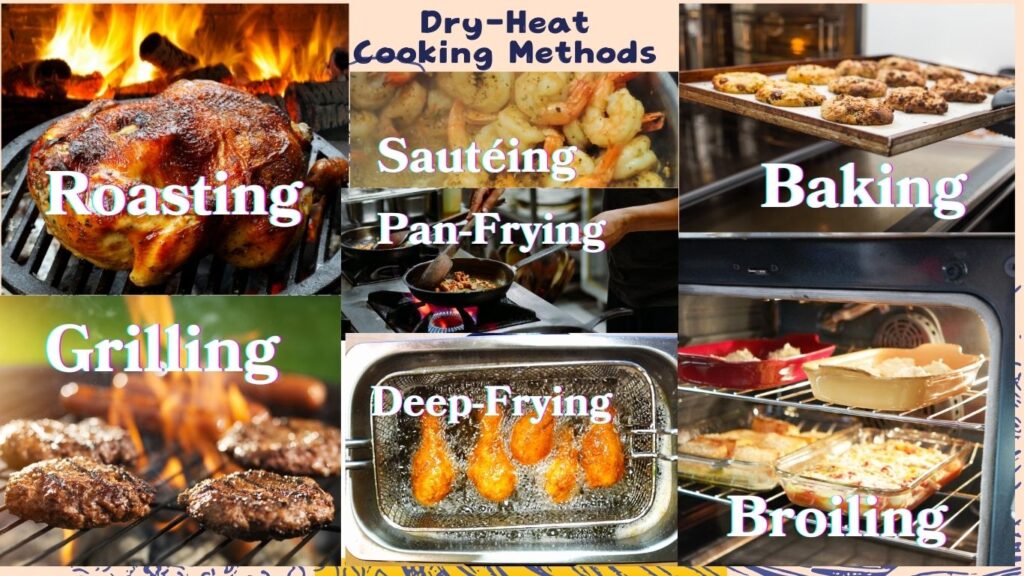We use affiliate links. If you purchase something using one of these links, we may receive compensation or commission.

Introduction
Introducing the topic by explaining the importance of understanding different cooking methods. Briefly mention how this knowledge can enhance cooking skills and improve the quality of meals.
Explore the ins and outs of dry-heat cooking methods. Learn what makes a method “dry,” which techniques are mistakenly thought to use dry heat, and how to choose the proper method for your dish.
What Are Dry-Heat Cooking Methods?
Define dry-heat cooking methods and detail how they function. Explain the mechanisms of heat transfer involved, such as radiation, convection, and conduction.
Dry heat cooking refers to techniques where heat is transferred to food without the use of additional moisture. This method, which includes roasting, grilling, and baking, typically involves high temperatures of 300°F or more. The key to achieving the desirable browning and enhanced flavors, such as those found in toasted bread, lies in this method. Through processes like caramelization and the Maillard reaction, dry heat cooking creates a deliciously crispy exterior and rich taste.
Examples of Dry-Heat Cooking Methods:
- Roasting and Baking
- Grilling and Broiling
- Sautéing and Pan-Frying
- Deep-Frying
Common Misconceptions About Dry-Heat Cooking Methods
Discuss several techniques often mistakenly categorized as dry-heat methods and clarify why they do not fit the category.
Misconception 1: Braising
- Explanation: Although braising involves initial searing (a dry-heat method), the majority of the cooking process uses moist heat.
Misconception 2: Steaming
- Explanation: Steaming uses steam for heat transfer, which involves moisture, categorizing it under moist-heat methods.
Misconception 3: Poaching
- Explanation: Often thought to involve dry heat due to its gentle cooking nature, poaching actually involves submerging food in liquid at low temperatures.
How to Choose the Right Cooking Method
Provide guidance on how to select the appropriate cooking method based on the type of food and desired results. Offer practical tips for matching the technique to the meal for optimal flavor and texture.
Conclusion
Summarize the key points discussed and encourage readers to experiment with different methods. Emphasize the benefits of understanding cooking methods for improving culinary skills.


